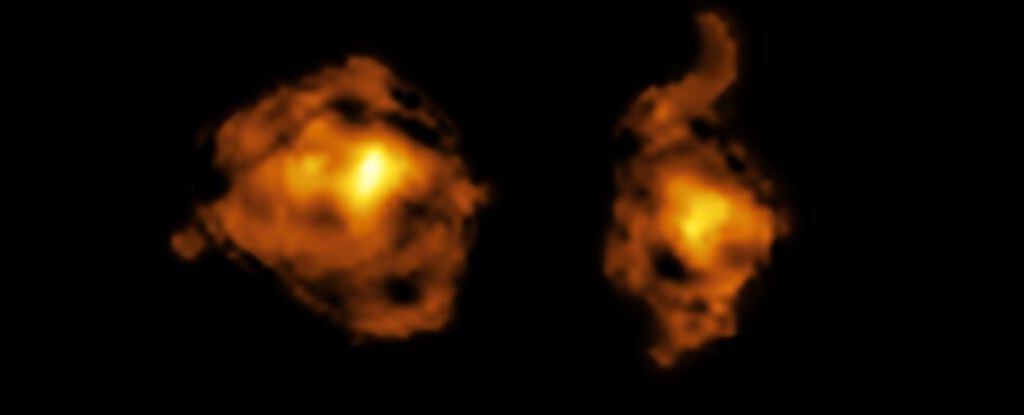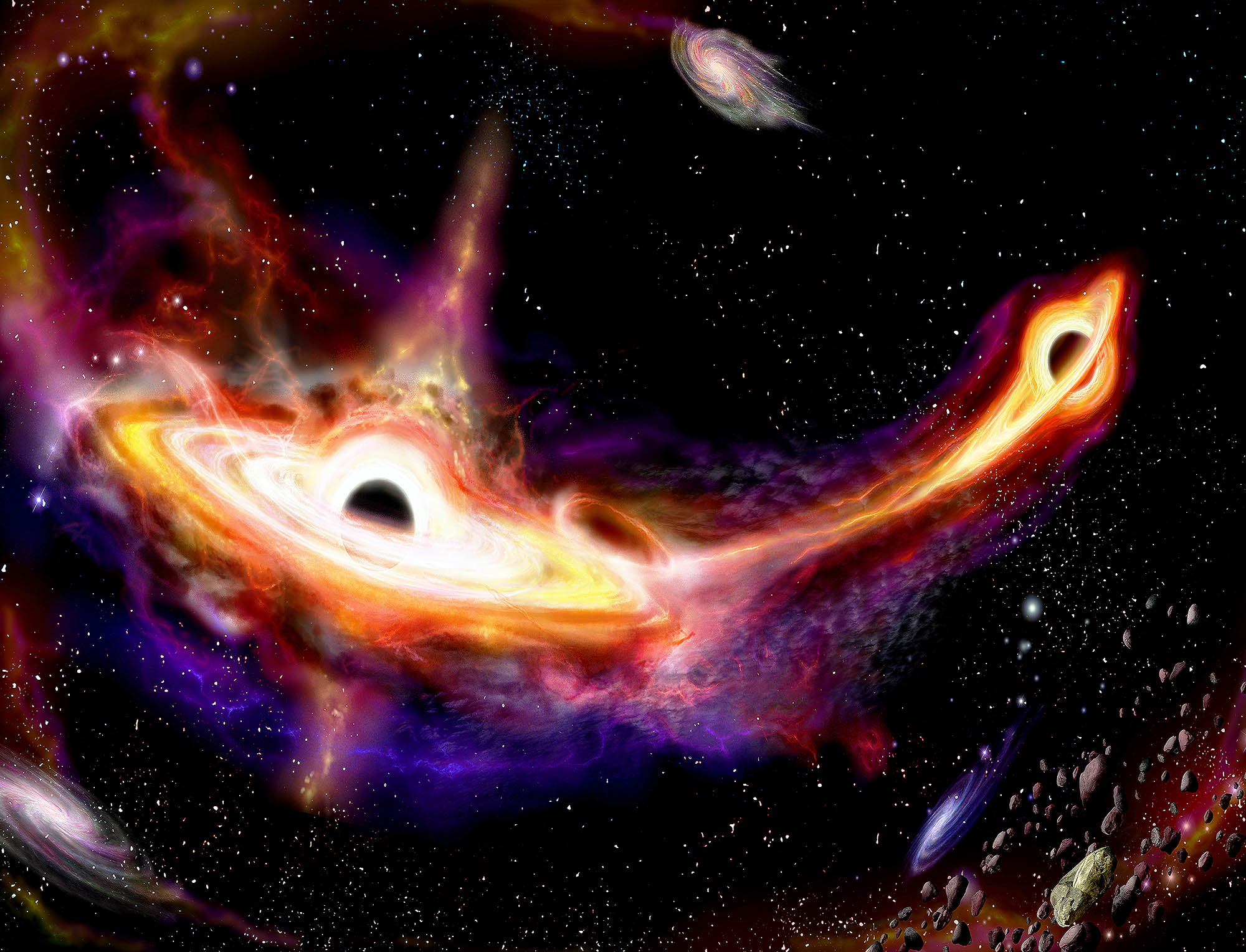
The moment one galaxy spears another with a powerful beam of radiation shooting from its central black hole has been spotted in a distant galactic collision.

The latest discovery used the Hubble Space Telescope (HST) to spot three bright, visible light 'hot spots' deep inside a pair of colliding galaxies.

Look hard enough at the roiling mist of gas and starlight that is our galaxy, and you'll find traces of a violent upbringing.

Astronomers discovered the first pair of merging quasars from the Cosmic Dawn, 900 million years after the Big Bang.

Discovered in 2013 as the source of rampant star formation just 880 million years after the Big Bang, a 'galaxy' named HFLS3 is not a galaxy at all. HFLS3 is actually six galaxies undergoing an epic, giant collision at the dawn of time.

Scientists have unlocked one of the biggest mysteries of quasars—the brightest, most powerful objects in the universe—by discovering that they are ignited by galaxies colliding.

Astronomers have spotted three supermassive black holes (SMBHs) at the center of three colliding galaxies a billion light years away from Earth. That alone is unusual, but the three black holes are also glowing in x-ray emissions.

Located in the constellation of Hercules, about 230 million light-years away, NGC 6052 is a pair of colliding galaxies. This particular image was taken using the Wide Field Camera 3 on the NASA/ESA Hubble Space Telescope.